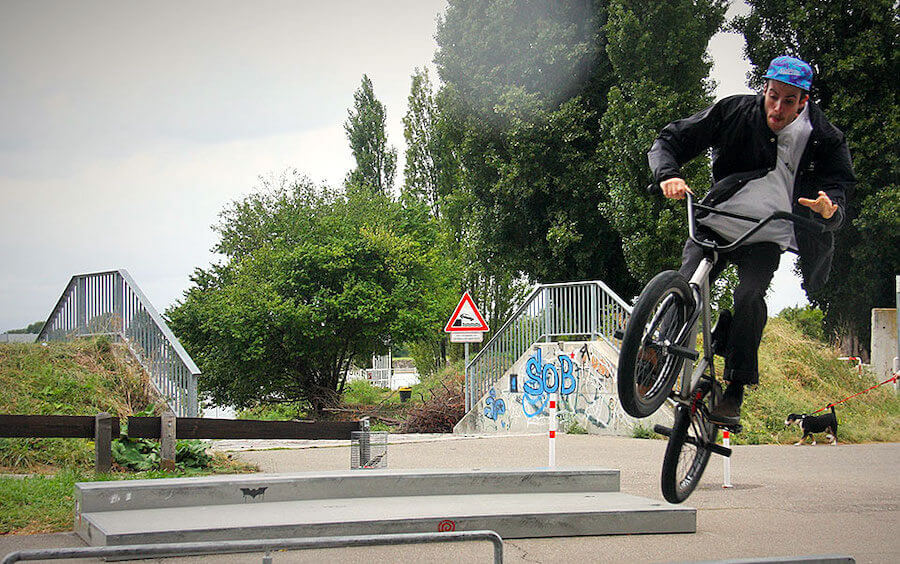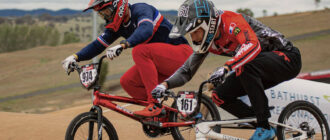For every age or body size, there is the right race bike. The frame sizes are divided into the following categories: Micro, Mini, Junior, Expert and Pro. Depending on the manufacturer, there are in the Pro category still the sizes XL and XXL. Most manufacturers still have BMX bikes with 24-inch wheels, the so-called cruisers in the range. Visually, they resemble an MTB, but are pure BMX bikes.
The most important in brief:
- With a BMX you can on the one hand on the race track really accelerate and on the other hand in the skate park make cool tricks and stunts.
- Basically, a BMX bike is divided into Race BMX, Freestyle BMX and Jumping BMX. The different models of these types you can also buy in different sizes and colors.
- A Freestyle BMX is built to try out different tricks and stunts in the skate park. A Race BMX, on the other hand, is designed for the race track. The Jumping BMX is particularly suitable for jumps and tricks.
What is the difference between a BMX and a traditional bike?
The primary difference between a BMX and a traditional bike is the design. While a BMX is built to ride on short race tracks or do tricks, a conventional bike is designed for longer distances.
In addition, BMX bikes and conventional bikes are designed for different surfaces. A BMX is primarily ridden on the street and in halfpipes. A mountain bike, on the other hand, is usually ridden on a more challenging surface such as steep slopes, rocks or mud.
In addition, the 20 inch tires of the BMX are much smaller compared to the tires of conventional bikes. The frame of a BMX bike is also smaller than that of a regular bike. Due to the smaller frame, BMX riders have better control over their equipment during stunts and jumps.
The BMX’s 360-degree rotating handlebars also represent a difference from the handlebars of a regular bike. In addition, a BMX bike traditionally has only one gear, while a regular bike can have up to 24 gears.
The following table shows you the differences just described at a glance:
| Difference | BMX | Bike |
| Design | Short race tracks, Tricks | Longer tracks |
| Substrate | Street,Halfpipes | Also for demanding substrates, e.g. steep slopes |
| Tires | Mostly 20 inch | Up to 29 inch |
| Frame | Relatively small in contrast to a normal bike | Relatively large compared to a BMX |
| Handlebar | Rotatable up to 360 degrees | Up to 180 degrees rotatable |
| Gears | 1 gear | Up to 24 gears |
What BMX brands are there?
The following BMX brands are internationally established and are among the best manufacturers of BMX bikes in the world:
- WeThePeople
- Fit
- Haro
- Sunday
- Odyssey
- Kink
- United
Which BMX size fits me?
BMX bikes are generally produced in four different sizes: Mini for 4 to 6 years, Junior for 6 to 9 years, Expert for 9 to 13 years and Pro for 12 years and older.
 Micro:
Micro:
The bike for the “smallest” racers, age range 3-6 years (height: up to 110 cm).
Mini:
Ideal for the 8-10 year olds (height: up to 130 cm)
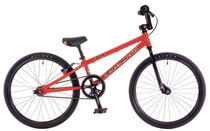 Junior:
Junior:
10-12 years, then you are on the bike (height: up to 150 cm)
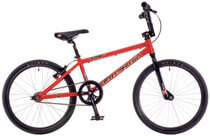
Expert:
13-14 years, the bike is already an Expert (height: up to 160 cm)
 Pro:
Pro:
15 years and older - no upper limit (height: up to 175 cm / Pro XL up to 185 cm and taller)
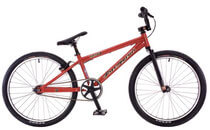 Cruiser 24 inch:
Cruiser 24 inch:
The bike for those who like it a little bigger or the BMX daddies and mommies
To find out which BMX size fits you best, you should consider your height as well as your age. The following table can help you.
| Body height in cm | Top tube | Wheel size | Handlebar height | Crank in mm |
| Up to 90 | 12“ | 12“ | 4–5“ | 90–100 |
| 90–120 | 15–16“ | 16“ | 6–7“ | 130–140 |
| 120–150 | 17–18“ | 18“ | 7–8“ | 140–170 |
| 145–165 | 20–20,25“ | 20“ | 7,5–8“ | 165–175 |
| 150–175 | 20,5“ | 20“ | 7,75–8,5“ | 170–180 |
| 170–185 | 20,75“ | 20“ | 8–9“ | 175–185 |
| Over 180 | 21–21,5“ | 20“ | 8–10“ | 175–190 |
What do I need to consider when buying a BMX?
Before you buy a BMX you should consider a few things. BMX bikes differ not only in their frame size, but also in the point tires and brakes from each other. Therefore, you should think before buying what you want to do with your BMX.
As mentioned at the beginning of this page, there are three different types of BMX, which are designed for different purposes. In addition, you should consider your experience in the BMX sport and your body size in the purchase decision. For example, a beginner should buy a light BMX, because tricks and stunts are easier with a light bike.
In addition, you should pay special attention to a used BMX bike that the frame is not warped or cracked, and that the BMX is still fully functional even in used condition.
The following checklist summarizes the most important things you should consider when buying a BMX:
- Choosing the right BMX type
- BMX experience
- Body size
- Check the functionality of used BMX
What are the alternatives to the BMX bike?
If you don’t necessarily want to ride BMX, but still want to practice a cycling sport, you can choose between several alternatives. The classic alternative to BMX is the traditional mountain bike, with which you can ride longer tours on different surfaces. Other alternatives are for example dirtbike and downhill.

